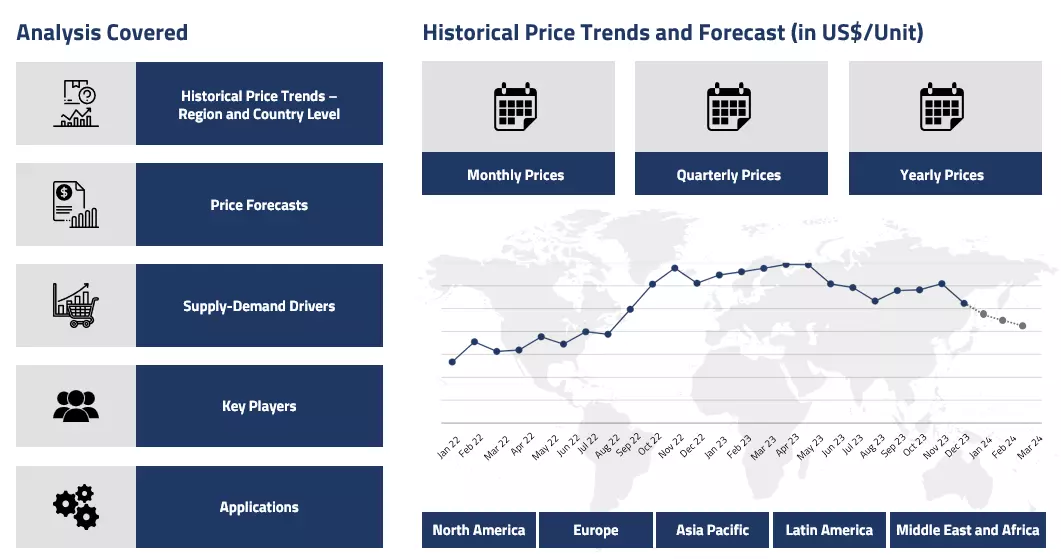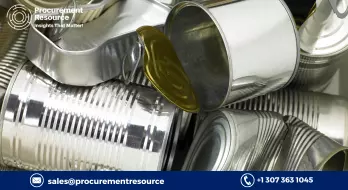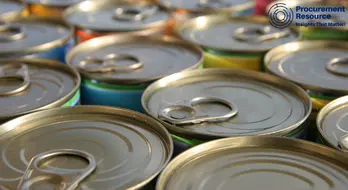Product
Tin Price Trend and Forecast
Tin Price Trend and Forecast
Tin Regional Price Overview
Get the latest insights on price movement and trend analysis of Tin in different regions across the world (Asia, Europe, North America, Latin America, and the Middle East & Africa).
Tin Price Trend for Q2 of 2025
| Product | Category | Region | Price | Time Period |
| Tin | Energy, Metals and Minerals | Europe | 32314 USD/MT | June'25 |
Stay updated with the latest Tin prices, historical data, and tailored regional analysis
Asia
In Q2’25, tin prices in Asia showed a mixed pattern, primarily influenced by raw material shortages and gradual shifts in production dynamics. The Chinese market, which plays a central role in global tin refining, struggled with limited tin concentrate supply throughout April and May. Imports from Myanmar remained below warning levels for several consecutive months, keeping smelters in regions like Yunnan and Jiangxi under pressure.
Tin Price Chart

Please Login or Subscribe to Access the Tin Price Chart Data
Though there was a minor increase in production due to slightly improved utilisation rates, especially after some recovery signals from Myanmar and the DRC, the pace was slow. Meanwhile, spot prices remained largely rangebound in May after a sharp fall in April. Scrap tin availability also declined post-Lunar New Year, leading to higher production costs and reduced output from smelters, especially in southern China. This kept price movements cautious despite high downstream demand from electronics and EV manufacturers.
Europe
European tin prices followed a fluctuating pattern during Q2. In April and most of May, prices declined due to weaker risk appetite and broader macroeconomic concerns, including uncertainty surrounding U.S. trade policies. Demand from industrial and technology sectors remained solid, but not strong enough to offset bearish sentiment driven by global market corrections.
However, as June approached, sentiment began to turn. With expectations building around resumed supply from Myanmar and stabilisation in the DRC, some confidence returned to the European market.
Prices gradually regained ground by the end of June, supported by tin's strategic role in electronics, especially as the EU increased its critical mineral stockpiling efforts and tech demand held steady. The spot prices settled at around 32314 USD/MT in the European market towards the end of said period.
North America
In North America, tin prices experienced a relatively steady quarter. The market remained sensitive to global supply developments, especially disruptions in Asia and Africa. However, strong underlying demand from the electronics sector and steady solar and EV infrastructure activity helped support prices.
North American buyers also faced challenges due to thin inventories and longer delivery times, which led to cautious but consistent procurement. While prices mirrored global volatility in April, sentiment stabilized through May and June as market participants adjusted to shifting production outlooks and attempted to build inventories.
Analyst Insight
According to Procurement Resource, Tin prices are expected to stay volatile in the near term, with macroeconomic pressures and supply recovery pacing as key factors to watch.
Tin Price Trend for Q1 of 2025
Asia
In the Asian market, tin prices showed consistent strength throughout the quarter. Chinese demand remained relatively stable despite mixed manufacturing indicators, while supply-side pressures dominated price movements. The Shanghai Futures Exchange saw tin futures hit their daily 10% limit in March following the Bisie mine suspension news.
Indonesian exports continued their downward trend from late 2024, with January exports particularly affected by delays in export permit renewals following the New Year holiday. Chinese smelters faced persistent feedstock shortages, forcing many to extend their production breaks during the Spring Festival. Inventory levels at the Shanghai Futures Exchange decreased steadily, providing additional support for prices in the region.
Europe
The European tin market followed a similar upward pattern, with London Metal Exchange (LME) prices climbing steadily throughout the quarter. By mid-March, LME tin reached its highest point since June 2022. European buyers faced tightening market conditions as on-warrant LME stocks fell by 27% from December 2024 levels, dropping to just 3,500 tonnes by mid-March.
The semiconductor industry, which accounts for over half of refined tin consumption, showed resilience in Europe, helping maintain strong demand despite economic uncertainties. The market particularly reacted to supply disruption news, with pronounced price jumps following announcements of production halts in key mining regions.
North America
North American tin prices tracked global trends, rising consistently throughout Q1. The region's market was particularly responsive to geopolitical developments affecting supply chains. The suspension of operations at the Bisie mine in Congo triggered a notable price spike in March. Canadian miner Alphamin Resources, which operates the Bisie mine, saw its stock value increase substantially as investors anticipated prolonged supply tightness. North American buyers also contended with the lingering effects of trade policy uncertainties following the January presidential transition, with concerns about potential new tariffs influencing market sentiment and purchasing patterns throughout the quarter.
Analyst Insight
According to Procurement Resource, Tin prices will remain strained in the coming months due to persistent supply constraints, historically low inventory levels, and steady demand from the semiconductor and electronics sectors. The resolution of political conflicts in producing regions, particularly in the DRC and Myanmar, would likely determine the extent and duration of the current supply shortage.
Tin Price Trend for the Second Half of 2024
| Product | Category | Region | Price | Time Period |
| Tin | Energy, Metals and Minerals | Europe | 32,176 USD/MT | October'24 |
| Tin | Energy, Metals and Minerals | Europe | 29,110 USD/MT | December'24 |
Stay updated with the latest Tin prices, historical data, and tailored regional analysis
In the second half of 2024, the tin market in Asia saw range-bound fluctuations, particularly during the fourth quarter. A sharp drop in October was driven by reduced confidence in upcoming Federal Reserve interest rate cuts, which initially fueled optimism. Regional factors, such as China’s Central Economic Work Conference decisions, also shifted market sentiment.
Challenges like Myanmar's mine closures had little direct impact on smelting, but tightening dilution supplies indicated ongoing difficulties. While industrial consumption in sectors like automotive and household appliances increased, it did not significantly affect prices. The reduction in social inventories, particularly in Shanghai, signaled tight supply, leading to modest price recovery. However, the market remained cautious, and prices were expected to stay in a consolidation phase due to low consumer demand.
In Europe, the tin market saw a continuous decline throughout Q4 2024, with prices falling from 32,176 USD/MT in October to 29,110 USD/MT in December. The decline was due to a global slowdown in demand, worsened by economic uncertainties, energy costs, and inflation. The automotive sector, a major consumer of tin, faced slowed growth, dampening consumption expectations.
Despite higher inventory levels and efforts to control international supply, the European market remained bearish, lacking a clear catalyst for price increases. In North America, the tin market showed stability during Q4, with steady industrial consumption from electronics and renewable energy industries. Supply levels remained balanced, and the mining and smelting sectors contributed to global market stability. Price recovery was possible but hinged on resolving broader economic challenges.
Analyst Insight
According to Procurement Resource, the prices of tin metal are expected to maintain same trend moving forward into the next year as the demand patterns remain negative.
Tin Price Trend for the First Half of 2024
| Product | Category | Region | Price | Time Period |
| Tin | Energy, Metals and Minerals | India | 29179 USD/MT | April '24 |
| Tin | Energy, Metals and Minerals | India | 29900 USD/MT | June '24 |
Stay updated with the latest Tin prices, historical data, and tailored regional analysis
Tin market performance has been quite positive throughout the first two quarters of the year 2024. In Asia, the tin market trends were majorly driven by the supply chain constrictions caused by the mining and export ban in the Wa region of Myanmar, which bears the weight of around one-sixth of global tin supplies. As per ITA (International Tin Association), despite a recent tax policy change in Wa state, Myanmar, the tin mines in the Man Maw mining area remain closed. Myanmar introduced a 30 percent in-kind tax in February on all grades of tin concentrate exports following the closure of several mines last year for conservation and pollution-reduction reasons.
In the Indian market, the monthly average prices went from about 29179 USD/MT (CIF, Ingots, 99.9%) in April '24 to around 29900 USD/MT in June '24. Furthermore, significant delays in Indonesian exports, with almost no trading activity observed on either the ICDX (Indonesia Commodity Derivatives Exchange) or JFX (Jakarta Futures Exchange) since the beginning of the year, have been pressurizing the tin's price trajectories over the said quarter.
Analyst Insight
According to Procurement Resource, the Tin prices are anticipated to continue rising in the coming months as well. Since the alarming supply situation amidst rapidly depleting inventories will guide tin prices upwards.
Tin Price Trend for the Second Half of 2023
Tin’s market performance was quite mixed during the second half of the year 2023. Quarter three started on a humble note in the Indian market as the prices faced southwards initially; supply dominated demands in the early months of the said span. However, as the tin supplies tightened in the international markets it impacted the prices in the Indian market as well. The middle of the fourth quarter saw tin prices escalating in the Indian market.
Similarly, in the European markets, after sliding down in the first couple of months beginning in July, the prices were seen regaining momentum in the latter half of the fourth quarter. Several factors were responsible for this tightening of tin supplies. Myanmar imposed a ban on tin mining, and Indonesia stopped exporting tin. These events disrupted tin supply chains and created a supply deficit. Consumer nations turned to countries like Congo for substituting purchases. However, the disrupted market situation continued for the rest of the year.
Analyst Insight
According to Procurement Resource, Tin prices are likely to surge in the coming quarters as the supply constraints are likely to persist longer in the coming months.
Tin Price Trend for the First Half of 2023
The price trend of tin showcased signs of improvement in the first and second quarters of 2023. The major causes of this inclining trajectory of prices were the strong demand for the product globally amid restricted supply. The supply chains were depleted, which resulted in a decline in the level of inventories that eventually supported the price trend of tin in the global market.
In the Asia-Pacific region specifically, several production plants underwent maintenance in the second quarter, further affecting the supply chains in the region, but the available inventories were able to cater to the declining demand from the end-user industries.
However, the major cause of concern for the growth of tin prices was the oscillations observed in the electronics market, which is its key market driver. The semiconductors and electronics market showcased a slow recovery phase that hampered the overall demand outlook of tin.
Analyst Insight
According to procurement resources, the price trend of Tin is expected to depict a fluctuating trajectory as the semiconductors market is moving feebly, and the disrupted supply chains are estimated to cause oscillations in the tin market.
Tin Price Trend for the Second Half of 2022
In the third and fourth quarters of 2022, the price trend of tin dipped significantly, especially in the month of October. During the COVID phase, the demand for tin increased due to the rise in the number of sales of the electronics and semiconductors industries, which are the key market drivers of tin. But when the world set its path of recovery from the pandemic, the demand for tin slid, and as a result, the price trend of tin declined in the third and fourth quarters of 2022.
In addition to this, the rising rates of global inflation and interest to keep the market activities afloat and the sluggish condition of the economy further negatively affected the price trend of tin. Among the other metal markets, the market activities of tin were particularly hostile as the trading volumes showcased serious fluctuations. Additionally, the governments of several nations adopted strict monetary policies to sustain their economic conditions, which eventually resulted in the decline in the price trend of tin.
Analyst Insight
According to procurement resources, the price trend of Tin is expected to depict a negative trajectory as the demand for tin will be affected by the weak economic conditions of the global market.
Tin Price Trend for the Second Quarter of 2022
Asia
Looking back on tin prices as we enter the middle of 2022, we can see that in March, tin prices reached a record high of 395,000 RMB/MTbefore losing the gains in May. Many tin smelters had undergone renovations as a result of falling pricing.
Prices of the metal on the Shanghai Futures Exchange (SFE) decreased in the second quarter of 2022. The market for non-ferrous metals was usually struggling. The SFE saw the biggest declines in tin and nickel futures.
The main cause was the U.S. dollar index's overnight surge, which saw it reach its highest level in almost 20 years. The abrupt decline in U.S. stocks has had a significant impact on market sentiment. Tin sales on the SFE were priced much lower in June due to pressure on the non-ferrous market as a whole.
Europe
Tin prices dropped sharply in Q2 of 2022. The price of three-month metal on the London Metal Exchange (LME) dropped to a one-year low of 30,405 USD/MT in June, continuing a sharp decline from March's record high of 51,000 USD.
Since the end of June, prices have declined by more than 50% from their March record highs, reaching their lowest levels in more than a year. In the week ending June 24, the tin contract traded on the London Metal Exchange (LME) fell 22%, marking its biggest weekly decline since at least 2005.
In Rotterdam, the metal traded at a premium of 1,150 USD/MT in July 2022 over LME cash as opposed to a peak of 1,750 USD/MT in July 2021.
Tin Price Trend For the First Quarter of 2022
Asia
In China's domestic spot tin market, the mainstream quotation range for tin ingot was 346,500-348,500 RMB/MT, with an average price of 347,500 RMB/MT. There was a lot of pressure on the metal market. Fundamentally, present market supply is still tight, market transaction is general, tin price is relatively high, downstream procurement is still on-demand, and overall transaction condition is average.
Europe
The price of tin in London fell 0.63%, while the price of tin in Shanghai fell 0.52%. On February 17, the London Metal Exchange three-month spot tin price was 43,955 USD/MT, down marginally from the record high of 44,250 USD/MT set on February 10. Short-term supply concerns from Indonesia added momentum to an already chronically undersupplied market, pushing tin prices to new record highs this year.
Tin prices will continue to rise in the coming years as demand remains strong and continues to outpace supply.The three-month price on the London Metal Exchange closed at 49,500 USD/MT in March 2022, mirroring the volatility in the broader commodities market amid Russia's invasion of Ukraine.
Tin Price Trend For the Fourth Quarter of 2021
Asia
Tin prices in worldwide markets fell over 5% in the fourth quarter of 2021, retreating from record highs. The price of soldering metal is expected to remain stable in 2022 and in the long term. Tin for March delivery ended lower on the Shanghai Metal Exchange on January 28 at 329,600 RMB/MT. Tin struck a new high this year, and with a year-to-date profit of about 80%, it was the strongest performer in the base metals market.
The spectacular rise in the prices had been mostly owing to extraordinarily positive supply/demand dynamics in a mixed macroeconomic environment. On the supply side, the Covid-19 outbreak caused lockdowns and output reductions in key tin-producing countries like as Indonesia and Malaysia. It also hampered concentrate supply, particularly in Myanmar, the world's largest producer, where Covid-19 restrictions stifled the flow of raw materials to Chinese smelters. In China, a heat wave and energy usage limitations hit Yunnan province earlier this year, putting a damper on smelting activities.
Europe
In Q-4, tin prices on the London Metal Exchange (LME) closed at 41,684 USD/MT for a three-month contract. The metal hit a new high before easing off, driven by low stockpiles, which indicated limited supply, and China's efforts to stimulate its economy, which lifted demand expectations. When trading resumed at 1300 GMT in China, prices fell from their highs, despite promises of government support for the property sector, which was facing a debt crisis.
North America
Tin prices reached a high of 39,159 USD/MT in November 2021, up 79% from the year before. The increase was fueled by a shortfall caused by increased need from the electronics industry, where it is used in circuit board manufacture, and total metal output was inadequate. However, because of the exorbitant cost of energy resources, prices will not revert to pre-pandemic levels. Following record-breaking tin premiums in 2021, the price estimate for 2022 is marginally milder, as ongoing demand growth encourages additional investment to boost metal supply.
Tin Price Trend For First, Second and Third Quarters of 2021
Asia
Metal demand surged in India as a result of the outbreak, but shipment delays wreaked havoc on supplies. Prices remained solid through the end of the year, owing to tight supply, strong demand, and low stockpiles. The prices increased by over 50% since the outset of the year. Prices rose due to rising demand for consumer electronics, cellphones, and electric vehicles (EVs), with lead-acid batteries accounting for the majority of the increase, as well as growing application in lithium-ion batteries and electronic solders.
Exports from Indonesia, the world's largest exporter and second-largest manufacturer of the metal, fell 24% in the first quarter of this year, owing to a scarcity of shipping containers and bottlenecks. Similar supply concerns existed in China, the world's largest producer, and Congo, boosting tin prices. The lack of mining potential was attributable to inadequate investment rather than a scarcity of tin on earth.
Europe
In April of this year, the stocks were down 76% from the same month the previous year. Tin prices on the London Metal Exchange reached a peak of 32,975 USD/MT in May 2021, which then fell to 30,364 USD/MT for a three-month contract. Tin for cash, on the other hand, was priced accordingly at 32,079 USD/MT, owing to a shortage of supplies.
High prices were the result of excellent long-term demand prospects driven by the electronics sector's expansion and the growing use of electronics in electric vehicles.
North America
The prices rose to 2011 levels due to a lack of supply. The mean tin prices were anticipated to rise to 23,000 USD/MT, up from 19,500 USD previously. China stated that it would dump reserve stocks to lower non-ferrous metal prices, however, the ITA claimed that this would not affect tin prices because China's strategic reserve agency had no stock. In terms of price, tin was the finest-performing base metal this year, with prices nearly tripling since the epidemic trough to set new highs in late September. The market is currently in backwardation, and supply problems are projected to continue.
Tin Price Trend For the Year 2020
Asia
The Covid epidemic was the primary driver of the metal’s pricing, since supply constraints resulted from lockdowns to control the spread, mainly in Malaysia and Indonesia, which account for 30% of worldwide refined tin output. Tin's bull run began in November 2019, when Indonesia announced plans to limit the soldering metal's exports as part of an effort to attract investment in downstream businesses.
China was the largest buyer, with 181,000 MT, followed by the United States, with 30,000 MT. Shipments declined by 1.9% to 186,000 MT in 2020, compared to 196,000 MT in 2019. Indonesia was the leading provider, producing 65,000 MT of finished tin, accounting for 35% of the market.
Europe
Futures London Metal Exchange (LME) prices soared over 25%, reaching nine-year highs around 25,000 USD/MT in 2020. Spot prices rose even faster than futures prices, with short-term supply contracts trading at historically high premium costs to longer-dated price levels. While pressure in the physical market prompted the move, several dealers questioned if the LME's open-outcry trading floor's closure and changeover to electronic trading had worsened the instability.
North America
Tin traders faced severe shortages in the metal market as Covid-19 spurred a jump in demand with limited supply. Major investors took notice of the turbulence, which previously had been overlooked by the crucial but illiquid metal. During the work-from-home era, demand for the metal, which is used in soldering, rose dramatically. With mine output and shipping channels disrupted, key European and American consumers were scurrying for metal as warehouses run empty.
Procurement Resource provides latest prices of Tin. Each price database is tied to a user-friendly graphing tool dating back to 2014, which provides a range of functionalities: configuration of price series over user defined time period; comparison of product movements across countries; customisation of price currencies and unit; extraction of price data as excel files to be used offline.
About Tin
Tin is a silvery-white chemical element with a faint yellow hue. A post-transition metal, it is soft and malleable in nature. Tin can be obtained from the mineral cassiterite and remains solid at room temperature. The boiling point of Tin is about 2875 K (2602 °C) while its melting point is about 505.08 K (231.93 °C).
Tin Product Details
| Report Features | Details |
| Product Name | Tin |
| Chemical Formula | Sn |
| Industrial Uses | Tin plating, Specialised alloys, Optoelectronics, Soldering |
| Molecular Weight | 118.71 g/mol |
| Synonyms | 7440-31-5 |
| Supplier Database | Umicore N.V, American Elements, Yunnan Tin Group Company Limited (YTC), PT Timah (Persero) Tbk, Malaysia Smelting Corporation Berhad, Minsur S.A, Thailand Smelting and Refining Co., Ltd. (THAISARCO) |
| Region/Countries Covered | Asia Pacific: China , India, Indonesia, Pakistan, Bangladesh, Japan, Philippines, Vietnam, Iran, Thailand, South Korea, Iraq, Saudi Arabia, Malaysia, Nepal, Taiwan, Sri Lanka, UAE, Israel, Hongkong, Singapore, Oman, Kuwait, Qatar, Australia, and New Zealand Europe: Germany, France, United Kingdom, Italy, Spain, Russia, Turkey, Netherlands, Poland, Sweden, Belgium, Austria, Ireland Switzerland , Norway, Denmark, Romania, Finland, Czech Republic, Portugal and Greece North America: United States and Canada Latin America: Brazil, Mexico, Argentina, Columbia, Chile, Ecuador, and Peru Africa: South Africa, Nigeria, Egypt, Algeria, Morocco |
| Currency | US$ (Data can also be provided in local currency) |
| Supplier Database Availability | Yes |
| Customization Scope | The report can be customized as per the requirements of the customer |
| Post-Sale Analyst Support | 360-degree analyst support after report delivery |
Note: Our supplier search experts can assist your procurement teams in compiling and validating a list of suppliers indicating they have products, services, and capabilities that meet your company's needs.
Tin Production Process
- Production of Tin via Extraction.
Tin is extracted by roasting mineral cassiterite with carbon at nearly 2500 degrees Fahrenheit in a furnace. After this, it is treated in an electrostatic or magnetic furnace, which helps in the removal of impurities. Finally, the separation of any heavy metal impurities leads to the formation of Tin.
Methodology
The displayed pricing data is derived through weighted average purchase price, including contract and spot transactions at the specified locations unless otherwise stated. The information provided comes from the compilation and processing of commercial data officially reported for each nation (i.e. government agencies, external trade bodies, and industry publications).
Assistance from Experts
Procurement Resource is a one-stop solution for businesses aiming at the best industry insights and market evaluation in the arena of procurement. Our team of market leaders covers all the facets of procurement strategies with its holistic industry reports, extensive production cost and pre-feasibility insights, and price trends dynamics impacting the cost trajectories of the plethora of products encompassing various industries. With the best analysis of the market trends and comprehensive consulting in light of the best strategic footstep, Procurement Resource got all that it takes.
Client's Satisfaction
Procurement Resource has made a mark for itself in terms of its rigorous assistance to its clientele. Our experienced panel of experts leave no stone unturned in ensuring the expertise at every step of our clients' strategic procurement journey. Our prompt assistance, prudential analysis, and pragmatic tactics considering the best procurement move for industries are all that sets us apart. We at Procurement Resource value our clients, which our clients vouch for.
Assured Quality
Expertise, judiciousness, and expedience are the crucial aspects of our modus operandi at Procurement Resource. Quality is non-negotiable, and we don't compromise on that. Our best-in-class solutions, elaborative consulting substantiated by exhaustive evaluation, and fool-proof reports have led us to come this far, making us the ‘numero uno' in the domain of procurement. Be it exclusive qualitative research or assiduous quantitative research methodologies, our high quality of work is what our clients swear by.
Related News
Table Of Contents
Our Clients

Get in Touch With Us

UNITED STATES
Phone:+1 307 363 1045

INDIA
Phone: +91 8850629517

UNITED KINGDOM
Phone: +44 7537 171117
Email: sales@procurementresource.com





